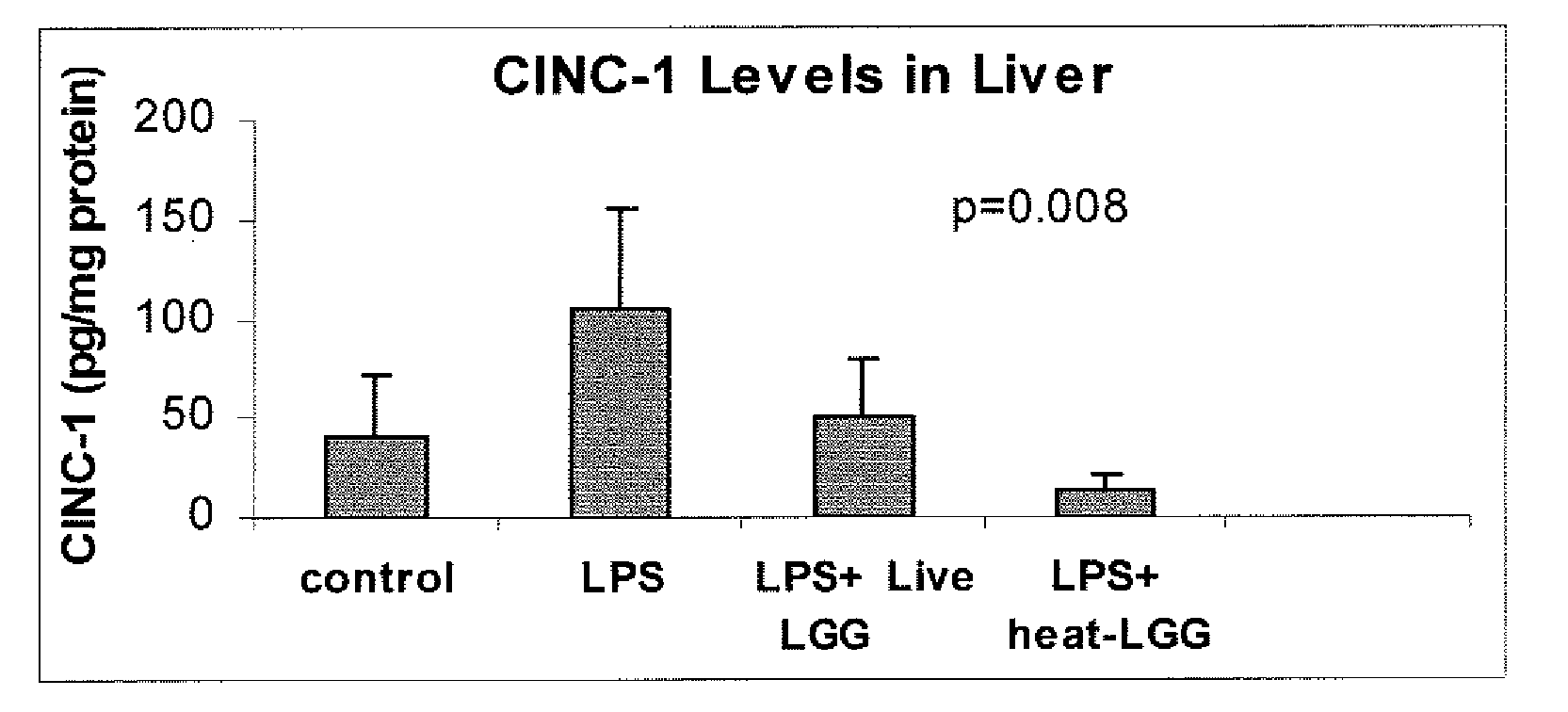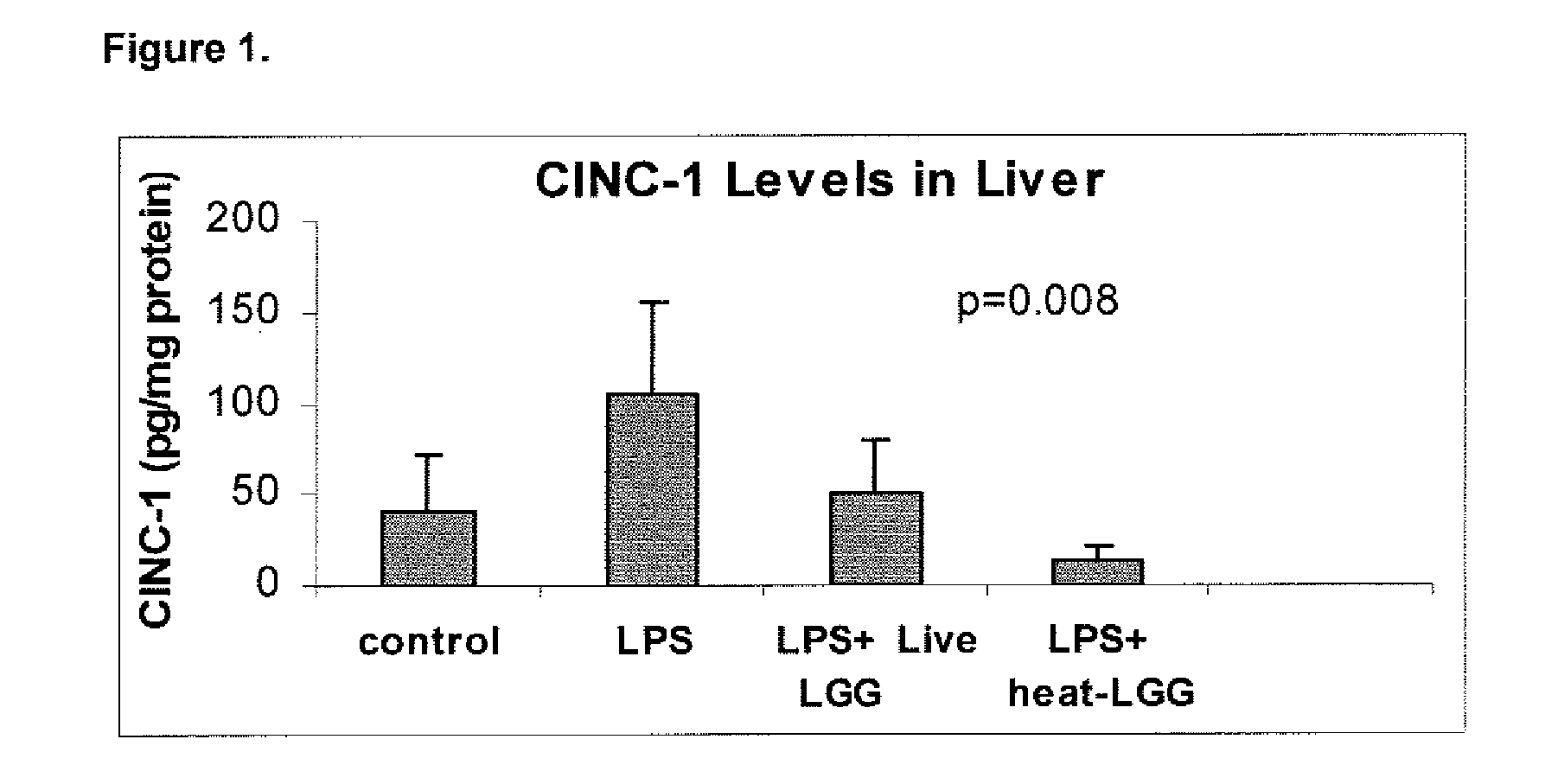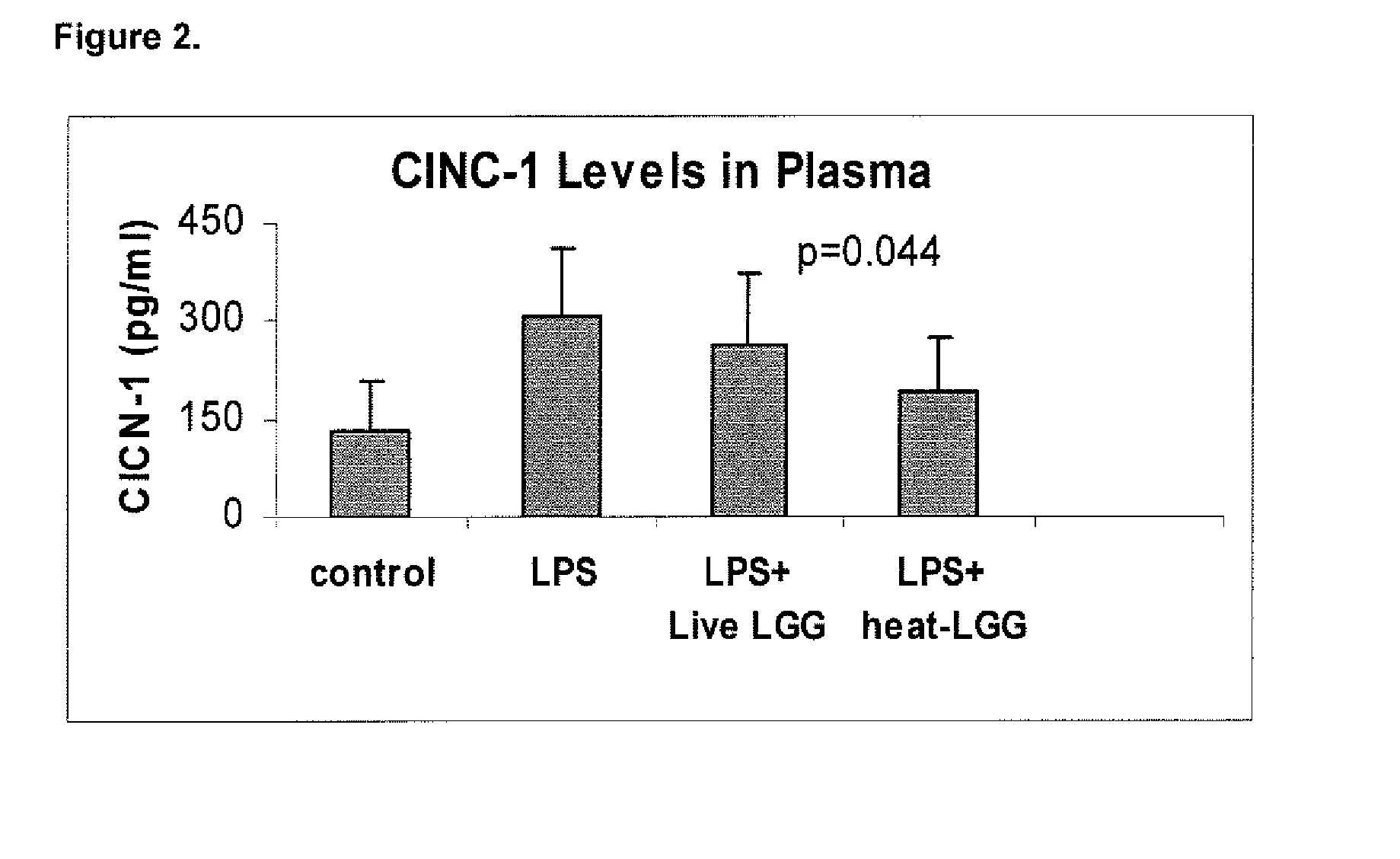Method for the utilization of and product containing inactivated probiotic
- Summary
- Abstract
- Description
- Claims
- Application Information
AI Technical Summary
Benefits of technology
Problems solved by technology
Method used
Image
Examples
example 1
[0107]This example illustrates the effect of inactivated probiotic supplementation on systemic inflammation in formula-fed neonatal rat pups. LGG was used as the probiotic in this example.
Materials & Methods
[0108]In two separate experiments, Sprague-Dawley (Taconic, Germantown, N.Y.) infant rats were randomly assigned to four gastrostomy feeding groups with five rats per group: a control group (no LPS or LGG), an LPS group, an LPS plus viable LGG group, and an LPS plus inactivated LGG group. Mother-reared rats of the same age were used as reference controls. Gastrostomy feeding, using the rat infant “pup-in-the-cup” model, began on day 7 of life of the rat pups. The gastrostomy feeding tubes were constructed from 24-cm sections of polyethylene tubing that were inserted into the stomach of the pups. The gastrostomy placement was done under isoflurane anesthesia. Timer-controlled syringe pumps were connected to the feeding tubes and were set to feed the rats for the first 20 minutes o...
example 2
[0123]This example further illustrates the effect of inactivated probiotic supplementation on inflammation in formula-fed neonatal rat pups. In this example, LGG was utilized as the probiotic.
[0124]Intestinal epithelial cells were pretreated with viable or UV-inactivated LGG at 1×108 cfu / L and then stimulated by Flagellin 500 ng / mL. IL-8 production was measured by ELISA. IkB and ubiquitinated-IkB (UbQ-IkB) expression were measured by Western Blotting and immunoprecipitation. NFkB localization was evaluated by immunofluorescence staining.
[0125]During the experiment, Flagellin induced a significant increase in cellular IL-8 production (p<0.05). Cells pretreated with either viable LGG or UV-inactivated LGG and then stimulated by Flagellin showed a significant (p<0.05) change in IL-8, NFkB nuclear translocation, ikB, and UbQ-IkB. The results are shown in Table 1. Arrows pointing upwardly indicate an increase in the parameter, while arrows pointing downwardly indicate a decrease in the p...
PUM
| Property | Measurement | Unit |
|---|---|---|
| Weight | aaaaa | aaaaa |
| Ratio | aaaaa | aaaaa |
| Biological properties | aaaaa | aaaaa |
Abstract
Description
Claims
Application Information
 Login to View More
Login to View More - R&D
- Intellectual Property
- Life Sciences
- Materials
- Tech Scout
- Unparalleled Data Quality
- Higher Quality Content
- 60% Fewer Hallucinations
Browse by: Latest US Patents, China's latest patents, Technical Efficacy Thesaurus, Application Domain, Technology Topic, Popular Technical Reports.
© 2025 PatSnap. All rights reserved.Legal|Privacy policy|Modern Slavery Act Transparency Statement|Sitemap|About US| Contact US: help@patsnap.com



